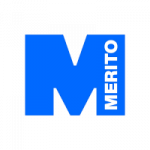The present publication is the third volume within a series focused on various manifestations of „total“ and „totalitarian“ phenomena and frameworks, as they accompany the modern era in its long‑ term evolution in the 19th and 20th centuries. The previous two volumes were devoted to Nation (2013) and War (2014); The Everyday (2016) and The Future (2017) are to follow. This volume's theme is Revolution, understood as a historical break in the growth of society and as the articulation of a conflict between the old and the new. Summaries of the individual contributions follow. For numerous reasons – argues Miloš Havelka, in his Totality: an Overcome Concept, Its World‑view Potential and Political Force –, the concept of totality has ceased to be challenging, both with respect to its epistemological claim, where it can serve merely as a regulative idea, and with respect to a pervasive organizing principle of the organization of social and political life, legitimized by historical laws. What remains a challenge, however, is research into its impact and historical development throughout the 19th and 20th centuries. Josef Vojvodík, in “Revolution in Modern Art” from the Viewpoint of (Not Only) Conservative Aesthetics, asks: What was the impact of the “revolutionary potential” of modern art? Did this revolution take place at all? And with that consequences? The article considers these questions on the basis of two publications which have crucially influenced all inquiry into the revolutionary potential of modern visual as well as verbak art: Hans Sedlmayr's The Revolution of Modern Art (1955) and Peter Bürger's Theory of the Avantgarde (1974). Petr Málek's “…Is All Art Revolutionary?” Revolution in the “Utopian Images of Thinkers”: In Between the Social and Artistic Utopism (of the Avantgarde) and the Awareness of Inevitable Failure consists of three parts. Part I, drawing on the texts of Walter Benjamin and Franz Kafka, considers the transformation of the revolutionary act in various manifestations of modern art, especially in Surrealism. Part II, against the background of Maurice Blanchot's work, considers the paradoxial relationship between literature and literary theory and their origin in the spirit of an eventually failed revolution. Part III focuses on the concept of so‑ called minor literature, as developed by Gilles Deleuze and Félix Guattari, and attempts to articulate why all great and revolutionary things originate in a minority. The inner heterogeneity of T. G. Masaryk's World Revolution (1925) – argues Daniel Vojtěch, in his World‑Redeemers? The (R)evolutionary Whirlwind and Critical Modernity – demonstrates the ambiguous relationship of critical modernity to revolutionary ideas and ideologies. Masaryk's contradictory resolution of the problem of European nihilism, presented in the book as a “revolution”, i.e., an overturning leading to a new world order, can be seen as an important outcome of critical modernity, expanding by its skepticism on current ideological norms and presenting its own program via a constant re‑ evaluation of its own presuppositions. Literary historian Václav Vaněk in his From the Šotek to the Diblík, from the Brejle to the Rachejtle. Changes of Humoristic Periodicals in the Revolution and after the Revolution 1848 lightens – through profiles of particular humoristic periodicals – changes on this field. Drawing on several areas in Czech modern art from the 1880 s to the 1900 s, Luboš Merhaut's “Movement against Rest”. The Potential and the Transformations of the Concept of Literary Revolution in the Late 19th Century demonstrates that changes in art do not occur as sudden, qualitatively novel jumps, but rather as a constant confrontation among renewing and conservative tendencies within a literary power field. The key concepts of Russian Formalism, when set within their historical context – argue Libuše Heczková and Kateřina Svatoňová in their

